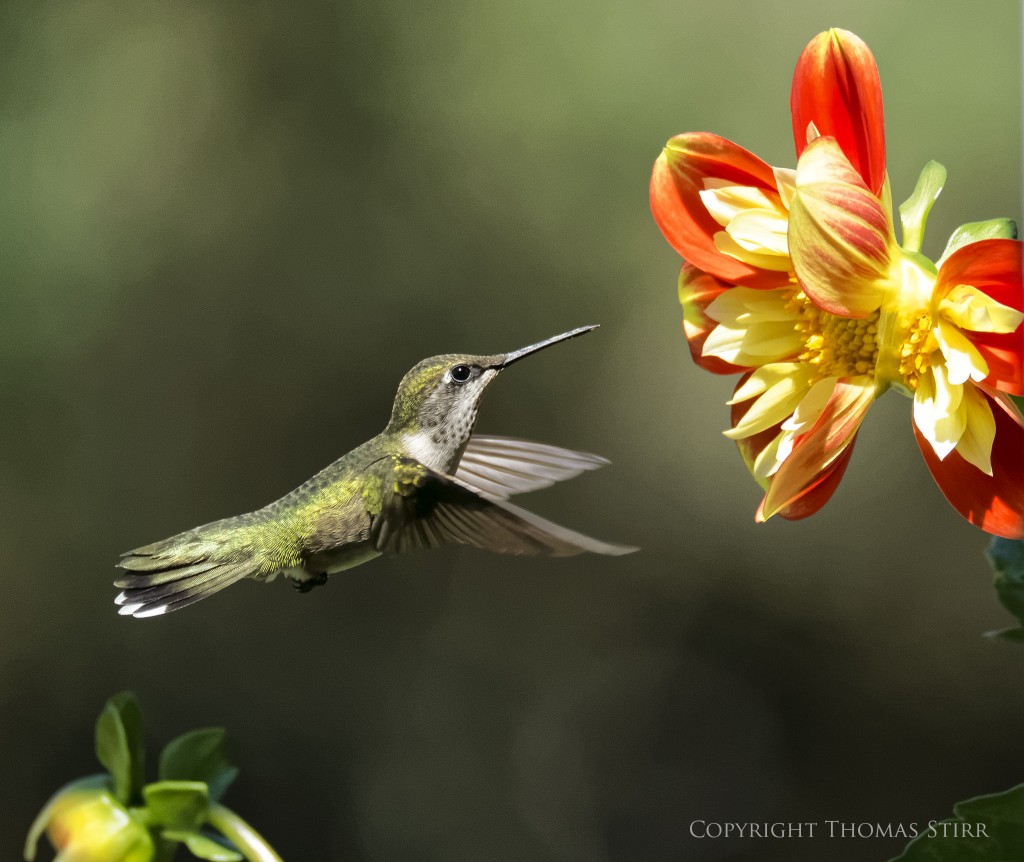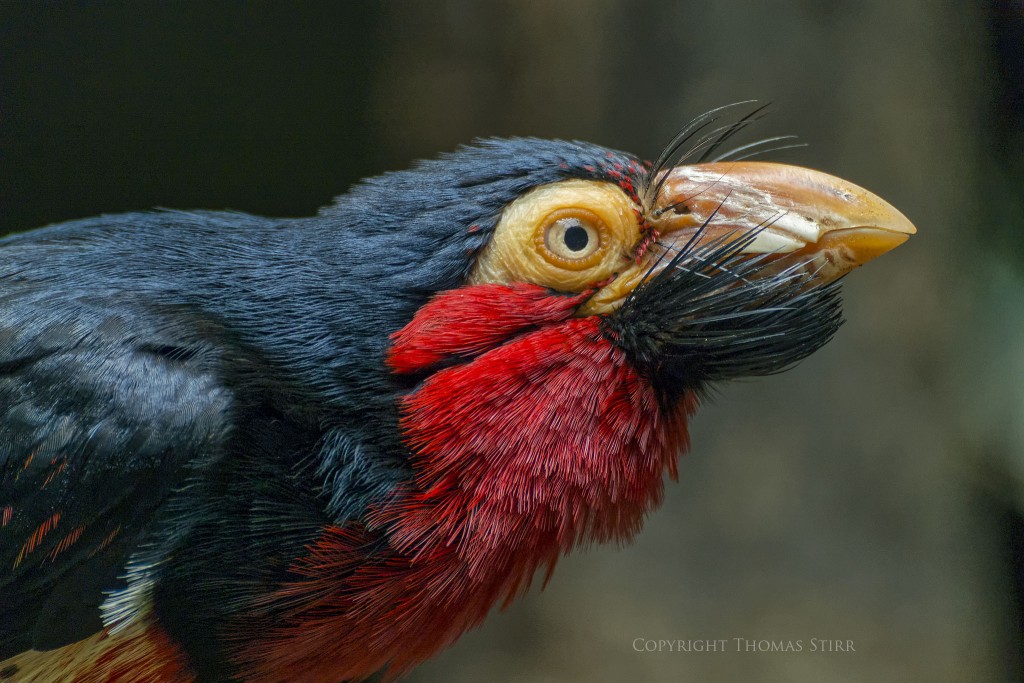When it comes to our choice of camera equipment, the only thing that ultimately matters is ‘getting the shot’… regardless of the brand of gear used. Many internet chat rooms and YouTube channels still seem glutted with discussions/arguments about camera specifications and the relative advantages or disadvantages of various camera models. Some even tout ‘battles’ between brands/models. *sighs*
What seems to be overlooked much of the time is whether a photographer was ‘getting the shot’ with the equipment they owned… regardless of sensor size, brand or model.
NOTE: Click on images to enlarge.

I’m currently working on a handheld bird photography eBook and have been spending some time going through volumes of my previous bird photographs. It has been an interesting experience to peruse through a collection of older photographs trying to identify ones that may be relevant for the eBook.

As I was reviewing photographs my mind wandered back in time to the days when I was photographing birds with a Nikon D800 and a Tamron 150-600 mm f/5-6.3 zoom lens.

This led me to think about the importance of each of us of ‘getting the shot’ when we’re out with our camera gear. In that precise moment when we fully depress our shutter release nothing else matters except getting the shot. It is an experience indelibly painted by the emotions of trust and confidence.

Obviously subject matter can play a part in our choice of camera equipment. This is one of the reasons why some folks shoot with more than one camera system. Some equipment is a better fit for their needs than other gear in specific situations.

I’ve always preferred to use one dedicated interchangeable lens camera system. There have been times when I’ve been in a transitory stage moving from one camera format to another. The time frame for these changes tended to be fairly short.

Getting the shot in terms of selecting equipment includes a range of camera gear considerations. These can include some issues like low light capability. Auto-focusing performance. Sensor performance characteristics like dynamic range and colour depth. Weatherproofing. Overall reach. Frame rates. Buffer size. EVF experience. Battery life and so on.

New computational photography technologies are increasing being included in our list of criteria. The cost of camera equipment… its size and weight… as well as comfort, handling and ergonomics, can also be important considerations when selecting camera gear.

How we intend to use our images can also be an important factor for many of us. There certainly are differences to be considered if our images will primarily be used online versus being printed in very large formats.

At the end of the day, each photographer needs to determine for themselves how much dynamic range, colour depth and low light performance they need for the work that they create… as well as a host of other factors.

I do find it rather odd how fixated we can get about sensor size and related sensor performance. For example, I don’t recall Canon full frame cameras like the 6D Mark II… which was introduced in June 2017… getting incessantly criticized because of its dynamic range performance. Even though, at base ISO-100, it measured 11.9 EV based on DxOMark test scores.

By comparison the Olympus OM-D E-M1 Mark II, which was introduced in September 2016, had a dynamic range of 12.8 EV at its base ISO-200, according to DxOMark testing. Since it had a small M4/3 sensor it faced constant criticism even though it scored better at base ISO than the Canon full frame 6D Mark II in terms of dynamic range.

The Nikon 1 system was always something that critics loved to hate. They overlooked the fact that the Nikon 1 J5… which was available on April 30, 2015… had a better dynamic range test score (i.e. 12 EV at base ISO-160) according to DxOMark) than the full frame Canon 6D Mark II did at base ISO-100.

The point here is simply that if 11.9 EV of dynamic range was acceptable in 2016 for the folks who bought and enjoyed using the 6D Mark II, very little has changed with how we use our photographs today. Other than perhaps an increase with online use.

In fairness we need to point out that Canon has upped its game considerably in terms of sensor performance since the time of the 6D Mark II.

Regardless of what camera gear we may choose there is one unalienable truth. If we are unsuccessful ‘getting the shot’ the size of our camera’s sensor and its imaging performance. The amount of money we spent on our equipment. Or the number of rave online reviews it garnered… are all irrelevant. The stark reality of missing the shot will be staring us in the face.

I know there are photographers who enjoy owning the latest and greatest camera gear. For some people, what they own can be more important than what they are able to create with it. Each of us is entitled to our own priorities and preferences… which should not be subject to criticism.

Owning the latest and greatest camera equipment doesn’t guarantee that we’ll be successful ‘getting the shot’. Nor does sensor size… larger or smaller… guarantee success. It all comes down to how well we understand and use what we have, and how well that specific gear fits our individual photographic needs.

As I was reviewing the images featured in this article, I realized that after using a number of different camera formats over the years, my preference for bird photography has always been skewed to gear that offered high frame rates, and was smaller and lighter on a relative basis.

Every piece of camera gear comes with advantages as well as trade-offs. It isn’t easy to ignore all of the online chatter and noise about camera specifications, and to stay focused on the most critical factor which is ‘getting the shot’.

Understanding what factors are critical to us individually ‘getting the shot’ helps each of us choose the best camera gear for our specific needs.

So, buy and use whatever camera gear makes the most sense for your specific needs… and ignore all of the online chatter. As you whittle down your choices if you’re still unsure, see if you can go out with friends and try out their camera gear. Nothing beats having a camera in your hands and experimenting with it.

Technical Note:
Photographs were captured handheld using camera gear as noted in the EXIF data. Images were produced from RAW files using my standard approach in post. This is the 1,238 article published on this website since its original inception in 2015.

How you can help keep this site advertising free
My intent is to keep this photography blog advertising free. If you enjoyed this article and/or my website and would like to support my work, you can purchase an eBook, or make a donation through PayPal. Both are most appreciated.
Our eBooks include Images of Ireland, New Zealand Tip-to-Tip, Nikon 1: The Little Camera That Could, Desert & Mountain Memories, Images of Greece, Nova Scotia Photography Tour, and a business leadership parable… Balancing Eggs.
If you click on the Donate button below you will find that there are three donation options: $7.50, $10.00 and $20.00. All are in Canadian funds. Plus, you can choose a different amount if you want. You can also increase your donation amount to help offset our costs associated with accepting your donation through PayPal. An ongoing, monthly contribution to support our work can also be done through the PayPal Donate button below.
You can make your donation through your PayPal account, or by using a number of credit card options.
Word of mouth is the best form of endorsement. If you like our website please let your friends and associates know about our work. Linking to this site or to specific articles is allowed with proper acknowledgement. Reproducing articles, or any of the images contained in them, on another website or in any social media posting is a Copyright infringement.
Article is Copyright 2022 Thomas Stirr. Images are Copyright 2015-2022 Thomas Stirr. All rights reserved. No use, duplication or adaptation of any kind is allowed without written consent. If you see this article reproduced anywhere else it is an unauthorized and illegal use. Posting comments on offending websites and calling out individuals who steal intellectual property is always appreciated!


I’m still amazed by the photos that you captured using the Nikon 1 system. You’re proof that a larger sensor is not always needed. Good article.
Thanks for adding to the discussion Lewsh.
I purposely used images from various camera systems in this article to help illustrate the issue that you noted in your comment. It’s been my experience that for bird photography frame rate and overall reach are often more important than sensor performance.
Tom
Clearly, you got the shot, and got the shot, and got the shot.
Thanks Greg… I had some success over the years 🙂
Tom
Great article. Thanks for keeping me level headed. Looking forward to the new eBook.
Keep up the great work.
Thanks Mladen… glad you enjoyed the article. Been working on the eBook for a few months now… still lots of work to do!
Tom